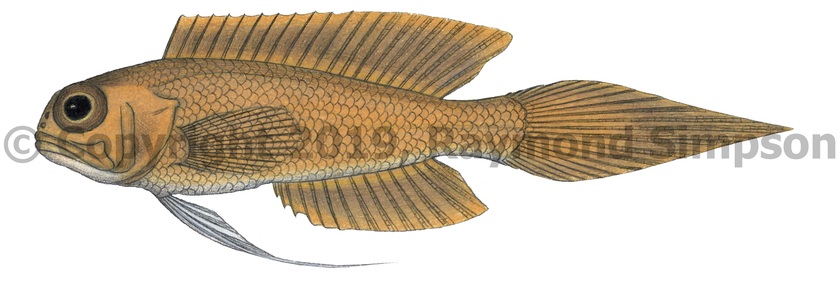
Common Name
Hook Jawfish
Year Described
Smith-Vaniz & Walsh, 2017
Identification
Dorsal Fin: X-XI, 12-13
Anal Fin: III, 11-12
Pectoral Fin: 19-21
Gill Rakers: 44-56 total in first arch
Vertebrae: 10+16-17 caudal
Lateral Scales: 33-39
Body elongate, gracile and compressed (characteristic of Lonchopisthus). Body tapers toward tail. Head large and round with a very large eye. Maxilla extends past eye and has a strong concave rear margin forming a distinct hook. Dorsal fin long with no notch between spiny and soft portions. Pelvic fin long (up to 75% SL) with first two rays thickened and unbranched and last three rays branched. Caudal fin lanceolate with central rays much longer than top and bottom. Branched caudal rays 11-13. Body scaled. Cheek and opercle without scales. Lateral line ends under dorsal ray 2-6.
Color
Body dusky yellow with no markings. The longest rays of pelvic fin are bright white. No dark stripe on maxillary and premaxillary membranes. Fins possibly with faint median stripes.
Size
Specimens range from 41-89mm SL.
Habitat
A deepwater jawfish living on the bottom(110-220m).
Range
The eastern Gulf of Mexico (off W. Florida) and off northeastern Honduras.
References
Smith-Vaniz, W.F. & S.J. Walsh. 2017. Revision of the jawfish genus Lonchopisthus with description of a new Atlantic species (Teleostei: Opistognathidae). Journal of the Ocean Science Foundation, 28, 52-89.
Other Notes
Closely related to Lonchopisthus lemur but differs in several aspects of morphology (cheek scales, pelvic fin length, etc.) and also color pattern. Other species in the genus have much higher meristics.